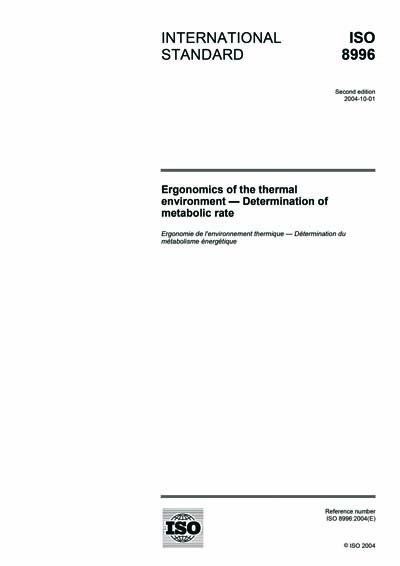Historical
ISO 8996:2004
Ergonomics of the thermal environment - Determination of metabolic rate
The metabolic rate, as a conversion of chemical into mechanical and thermal energy, measures the energetic cost of muscular load and gives a numerical index of activity. Metabolic rate is an important determinant of the comfort or the strain resulting from exposure to a thermal environment. In particular, in hot climates, the high levels of metabolic heat production associated with muscular work aggravate heat stress, as large amounts of heat need to be dissipated, mostly by sweat evaporation.
ISO 8996:2004 specifies different methods for the determination of metabolic rate in the context of ergonomics of the climatic working environment. It can also be used for other applications -- for example, the assessment of working practices, the energetic cost of specific jobs or sport activities, the total cost of an activity, etc.
Content Provider
International Organization for Standardization [iso]






